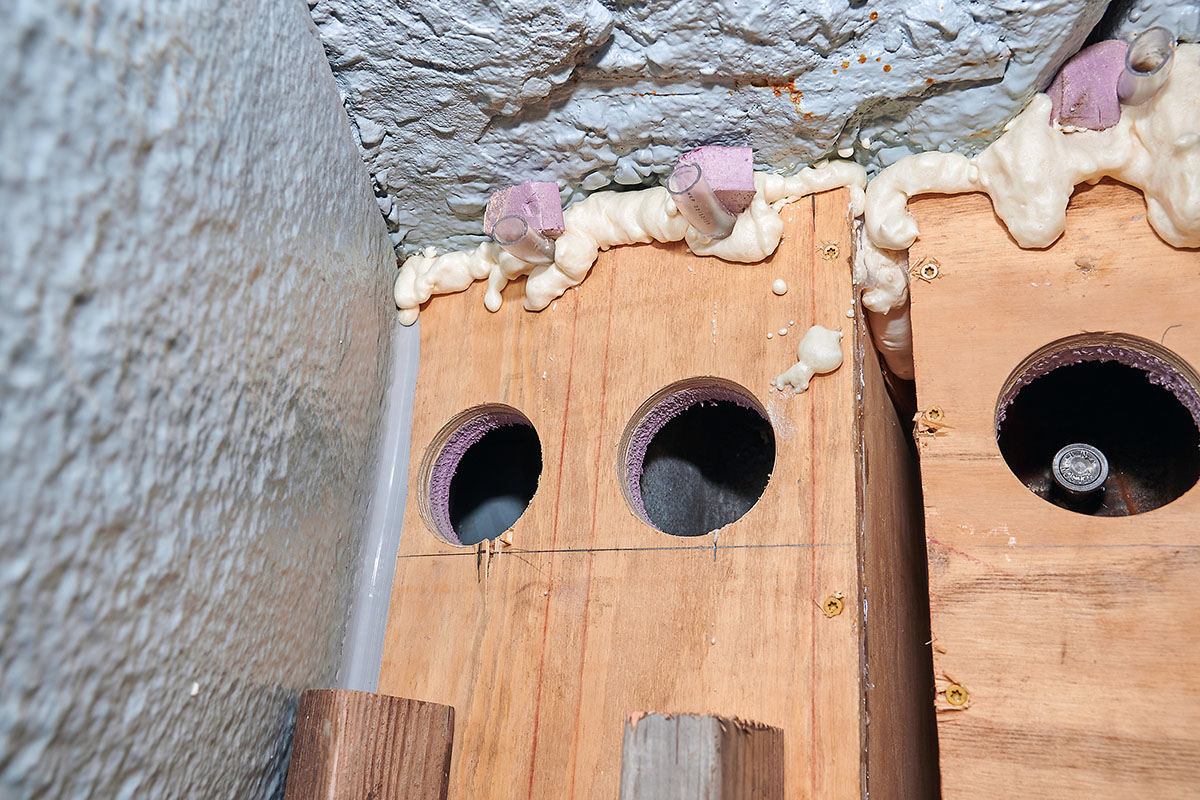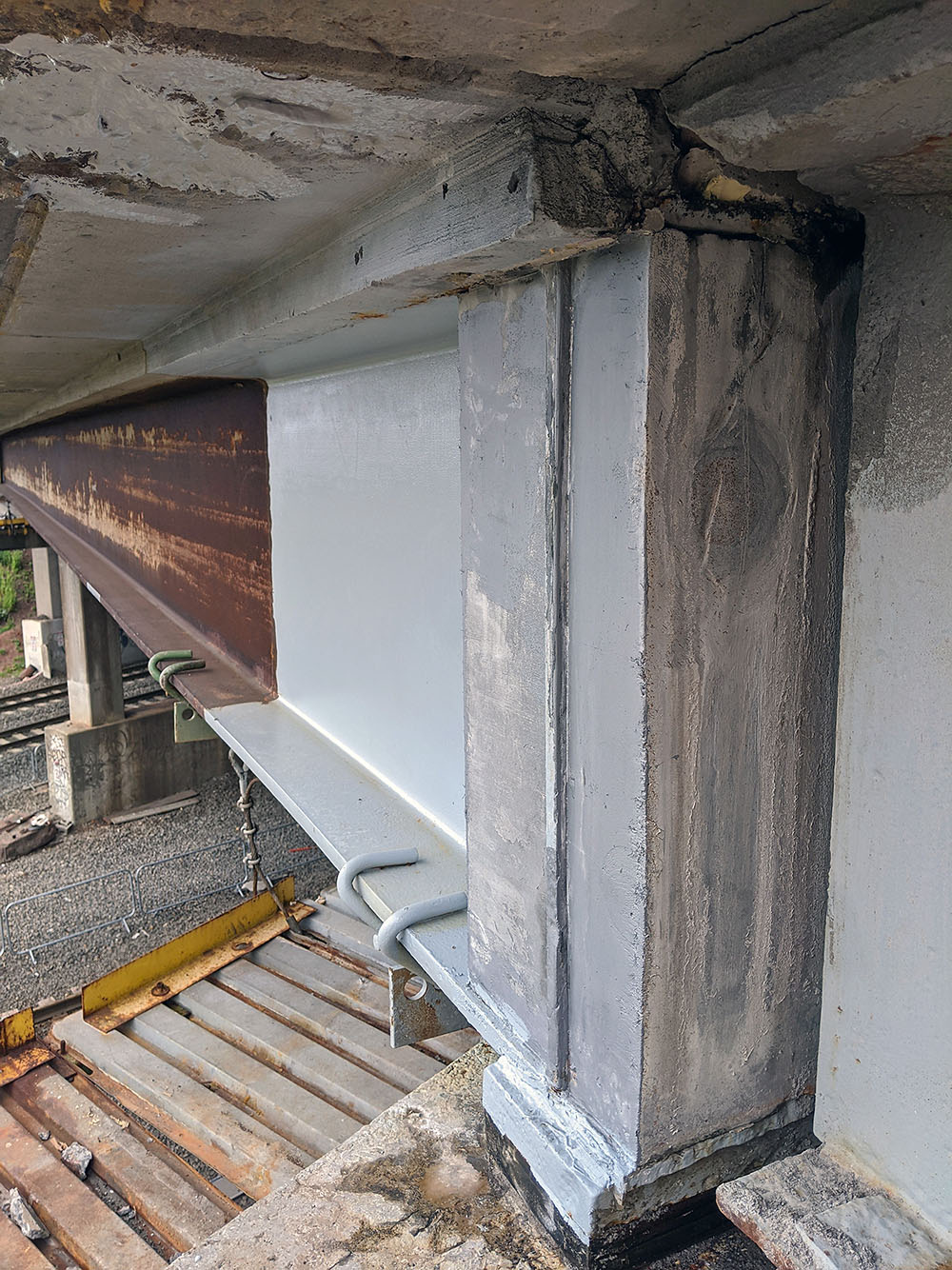
Repairing Bridges with UHPC
The use of ultra-high performance concrete (UHPC) to strengthen and repair bridges has grown substantially in the past 15 years. Early on, UHPC was most often used as an option for connecting prefabricated bridge elements. Today, States are using it to repair bridge deck overlays and beam or girder ends and to replace expansion joints with UHPC link slabs.
UHPC’s fiber-reinforced, cementitious composite material has mechanical and durability properties that far exceed those of conventional concrete materials. Regular concrete has a strength of about 4,000 pounds per square inch (psi), while UHPC can support more than 18,000 psi.
“Concrete tends to deteriorate with time,” said Dr. Sherif El-Tawil, a University of Michigan civil and environmental engineering professor who has researched UHPC for more than a decade. “Water goes into the pores of concrete and expands when it freezes. This breaks the concrete apart and becomes a very expensive problem to fix.”
Extensive corrosion of bridge beams can occur beneath leaking joints, especially in northern States. “When we have simple span beams and deck joints, we get leaking of water and de-icing salts which causes severe corrosion damage at the ends of beams,” said Dr. Alexandra “Lexi” Hain, University of Connecticut assistant research professor. “This results in a loss of bearing capacity and the need to repair these beams. It is an increasingly costly issue.”
Beam End Repairs
The University of Connecticut, in partnership with the Connecticut Department of Transportation (DOT), has developed a more cost-effective, easy-to-implement design to repair beam ends. The repair involves welding headed-shear connectors on the intact portion of the web, bypassing the corroded region. Next, the area is encased in UHPC to create an alternate load path. The load is transferred from the shear connectors to the UHPC and down to the pier. Proof-of-concept experiments led by Dr. Arash E. Zaghi began in 2013. Researchers looked at shear connector capacity with embedded UHPC and studied three full-scale plate girder repairs. From 2018 to 2020, Dr. Zaghi and Dr. Hain conducted a field implementation on a 55-year-old bridge along I-91 in New Haven, CT. A variety of sensors used to collect data before and after the repair confirmed that an alternate load path through the shear connectors and UHPC was established. “The data showed the repair was very successful,” said Dr. Zaghi.

UHPC repair adapts well to working within the tight geometric restraints of beam end supports. This photo shows formwork in place prior to encasing the repair area in UHPC.
Credit: Arash E. Zaghi and Alexandra Hain, University of ConnecticutBenefits
“UHPC beam end repair is a solution that is well adapted to working within tight geometric restraints of beam end supports, tight constraints with traffic control, and heavily restricted access beneath the bridge,” said Justin Ocel, FHWA’s UHPC for bridge preservation and repair team co-lead.
Michigan’s Saint Clair County Road Commission used the University of Connecticut’s UHPC research to make steel beam repairs on a 1930s bridge and were pleased with the results. “We believe that by using UHPC in the critical parts of the superstructure such as the beam ends, you’re going to get a longer life out of the bridge entirely,” said Dewayne Rogers, former Saint Clair County Road Commission project manager.
Non-Proprietary Mixtures
During his efforts to learn more about UHPC
for bridge repairs, Rogers heard about a
non-proprietary UHPC blend that Dr. El-Tawil developed at the University of Michigan. This option costs 70-percent less than commercially available UHPC mixes.
“Instead of buying a pre-mixed bag of UHPC, you buy the ingredients separately and then mix it yourself,” said Rogers. “It’s a little more legwork, but it reduces the cost a lot. We paid about $800 per cubic yard, and if you’re using 5 yards of UHPC for a maintenance project, that’s a small amount for many years of service.”
Agencies that have uncertainties about mixing UHPC themselves should not be deterred. “While the up-front cost may be higher than conventional solutions, once life-cycle costs are considered, UHPC can be a more economical solution,” said Zach Haber, FHWA’s UHPC for bridge preservation and repair team co-lead. “You can fix it numerous times with conventional solutions or once with UHPC.”

In this bridge beam end repair, the load is transferred from welded shear connectors to the UHPC and down to the pier.
Credit: Arash E. Zaghi and Alexandra Hain, University of ConnecticutUHPC Link Slabs
The New York State DOT (NYSDOT) knows firsthand how well UHPC bridge repairs last. The agency installed its first UHPC link slab in 2013.
“Based on our bi-annual inspections and an independent study, our UHPC link slabs are not showing any signs of leakage,” said NYSDOT Major Project Unit Supervisor Jim Scarlata. “The girder ends, diaphragms, bearings, and the pier are basically in the same condition as they were when the link slab was first constructed 8 years ago. The UHPC repair halted deterioration of the steel and concrete, reduced the need for future maintenance activities, and will preserve the bridge for many decades to come.”
Cover photo: Steel microfiber reinforcement is added to a batch of UHPC during a bridge beam end repair project in Connecticut.
—MORE INFORMATION
Click on this interactive map of Deployments of UHPC in Highway Bridge Construction to see where in-service bridges using UHPC are located and the application used.
Read the February 2022 EDC-6 UHPC newsletter for information on upcoming workshops and current UHPC research.
Contact FHWA’s Zach Haber or Justin Ocel for information and technical assistance.
Notice: The U.S. Government does not endorse products or manufacturers. Trademarks or manufacturers’ names appear in this article only because they are considered essential to the objective of the document.
Recommended Citation: U.S. Department of Transportation, Federal Highway Administration - Washington, DC (2022) Innovator Newsletter, March/April 2022, Volume 15 (89). https://doi.org/10.21949/1521807



